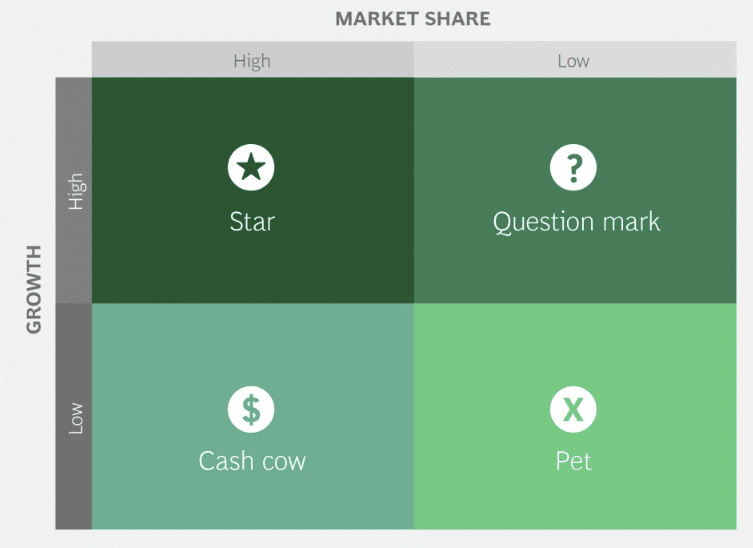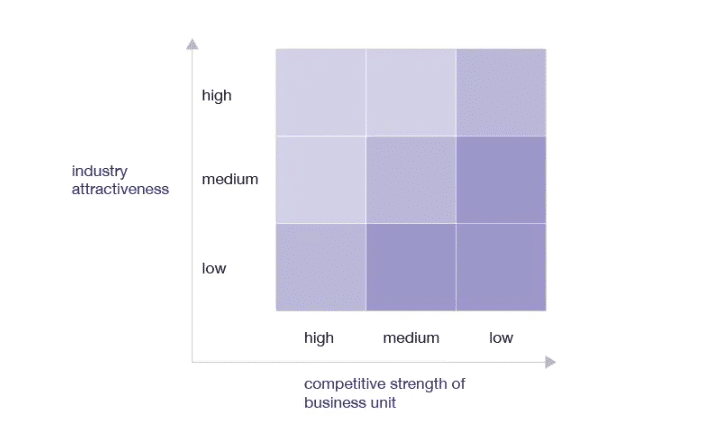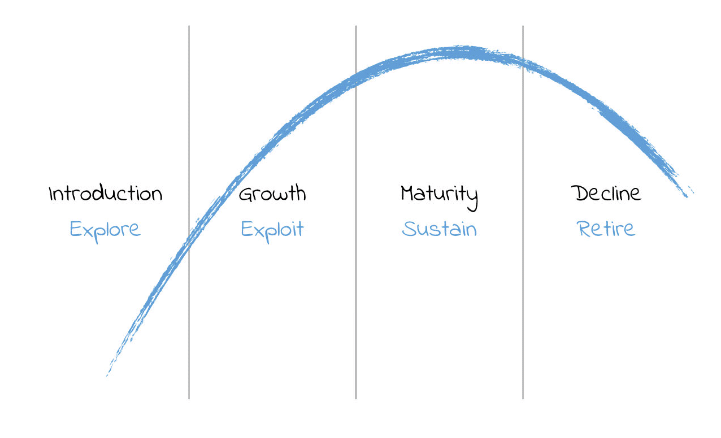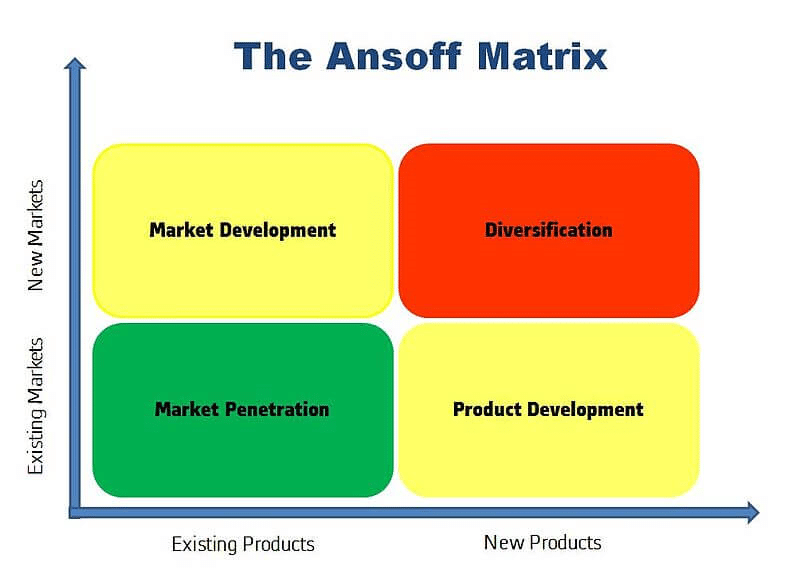Product Portfolio
What is a product portfolio?
A product portfolio is the umbrella term used to describe a company’s entire collection of products. For a product portfolio to be considered successful, all the products within the portfolio must be profitable and aligned with the overall business strategy.
In essence, a product portfolio is not just a collection of products but a strategic tool that guides a company through the additional challenges of managing them all, such as market dynamics, risk management, resource allocation, and long-term planning. It is integral to maintaining market relevance, driving innovation, and achieving sustained business growth
When you are managing multiple products, having a single roadmap view is a massive boost to successfully managing your product portfolio, as it enables strategic review at the highest level of enterprise product management.
What are the key elements of a product portfolio?
A product portfolio extends beyond being a simple collection of a company’s products, bundled together with no further thought. It represents a strategic assortment of products that collectively contribute to the company’s overall objectives and financial goals.
A well-curated product portfolio balances various aspects such as market diversity, risk, and potential revenue streams, to keep driving growth and profitability for the business. The key elements of a successful product portfolio include:
- Strategic diversity: Product portfolios often contain a diverse range of products to cater to different market segments and mitigate risks associated with market fluctuations. This diversity can be in functionality, target customer base, or the stage of the product lifecycle.
- Varied lifecycle stages: A product portfolio includes products at various stages of their lifecycles – from new launches to mature products. This helps in ensuring a steady flow of income as newer products grow while older ones reach maturity.
- Alignment with business strategy: Every product in the portfolio must align with and contribute to the overarching business strategy. This includes fitting in with the company’s long-term vision, mission, and core values.
- Dynamic nature: A product portfolio is not static. It evolves based on market trends, customer needs, technological advancements, and internal company changes. Companies need to regularly review and adjust their portfolios to maintain relevance and competitiveness.
The importance of a balanced product portfolio
Ensuring you have a balanced and diversified product portfolio can be central to an enterprise’s success, as it encompasses several key aspects of business management.
Firstly, such a portfolio can be very beneficial for risk management. By diversifying its range of products, a company can spread its risks. This diversification means if one product underperforms in the market, others in the portfolio can potentially offset this, ensuring the overall stability of the business. This balance is crucial in maintaining a resilient and sustainable business model.
Market adaptability is another critical advantage of maintaining a balanced product portfolio. Companies with a diverse range of products are better equipped to adapt to changing market dynamics, essential in today’s business environment where reliance on a single product or market can be risky. Diverse products enable you to pivot more easily in response to market trends, consumer preferences, or competitive pressures, thereby maintaining market relevance and agility.
A balanced portfolio also significantly impacts the potential for innovation, growth, and strategic decision-making. With a comprehensive understanding of each product’s performance and potential, product portfolio managers can allocate their resources more strategically. They can prioritize areas with high growth potential while gradually phasing out less successful products.
This strategic approach not only fosters innovation, as resources are channeled to developing new products and improving existing ones, but it also aids in making informed decisions about where to innovate, where to invest, and which markets to target.
Having a balanced product portfolio can also enhance your company’s stability by having products at different stages of their life cycles, ensuring a steady and diversified cash flow.
New products typically require more investment as they are being developed and introduced to the market. In contrast, established products, often in the maturity stage of their life cycle, are likely to generate substantial and sustainable revenue. This mix allows for a financial equilibrium, where the revenue from mature products can fund the development of new ones.
See for yourself how ProdPad can help you organize and optimize your product portfolio.
What is product portfolio management?
Product portfolio management (PPM) is the process of orchestrating and delivering a business’s strategy across its product line. It involves ensuring profitability and strategic alignment of all products within the portfolio. Unlike product management, PPM focuses more on longer-term outcomes and the overall product line, rather than day-to-day management of individual products.
A well-managed product portfolio is an essential element in strategic business management, helping enterprise-level companies to navigate market complexities, innovate effectively, and align their products with broader business goals.
What is product portfolio analysis?
Product portfolio analysis involves reviewing and assessing the performance, market position, and strategic fit of each product in the portfolio. This analysis helps in making informed decisions about product development, marketing strategies, and resource allocation.
Product portfolio analysis is a critical process in successful product portfolio management, providing insights into how the portfolio is contributing to the organization’s overall performance and how well it aligns with its strategic goals. This analysis is multifaceted, involving various techniques and considerations:
Some of the key areas product portfolio managers look at when performing product portfolio analysis include:
- Performance assessment: Evaluating each product’s financial and market performance, including sales figures, market share, growth rates, and profitability. This assessment helps in identifying which products are successful and which are underperforming.
- Market analysis: Involves examining market trends, customer preferences, and competitor activities. This analysis helps in understanding the market position of each product and identifying opportunities and threats.
- Strategic fit: Assessing how well each product aligns with the company’s strategic objectives and core competencies. This includes considering whether the products are meeting current market needs and if they are in sync with the company’s long-term vision.
- Portfolio balance: Looks at the mix of products in terms of their life cycle stages, risk profiles, and revenue potential. A balanced portfolio typically includes a mix of new, growing, and mature products.
Tools and frameworks used in product portfolio analysis
Product portfolios can vary in their structure and organization, often grouped into product lines or categories based on similarities, target markets, or strategic roles within the company.
While specific classifications and terminology can vary across industries and company strategies, here are some of the common approaches to organizing product portfolios:
1. BCG Matrix
The BCG Matrix, also known as the Growth Share Matrix or the Boston Matrix, is a 2×2 grid used to assess the current status of products in your portfolio. They fall under the following categories:
- Stars: High-growth products with a strong market share. They are often the market leaders and require continuous investment to maintain their position.
- Cash cows: Products with a high market share in a slow-growing industry. They typically generate steady revenue with little need for investment.
- Question marks: Products with growth potential but a currently low market share in a high-growth market. They require significant investment to become stars or risk becoming pets.
- Pets: Products with low growth and a small market share. These are often phased out or repositioned.

2. GE-McKinsey Matrix
The GE-McKinsey Matrix expands on the BCG matrix by using a 3×3 grid, with each axis representing a different aspect:
- Industry Attractiveness: The vertical axis gauges the attractiveness of the industry or market in which the business unit operates. This attractiveness could be determined by factors such as market growth rate, market size, profit margins, and competitive intensity.
- Business Unit Strength: The horizontal axis assesses the strength of the business unit itself within the market. This might include considerations of market share, brand strength, product quality, and customer loyalty.
Each cell in the grid thus represents a different scenario based on these two dimensions. For instance, a business unit in a highly attractive industry with strong unit strength might be labeled as a high priority for investment. In contrast, part of a product portfolio in a less attractive industry with weaker unit strength might be a candidate for divestment.

Product Life Cycle model
The Product Life Cycle is a framework that categorizes products based on their stage in their development. The life cycle of a product typically consists of the following stages:
- Introduction: This is the phase where a new product is launched in the market. It is characterized by low sales as the product is just gaining recognition. The focus during this stage is often on marketing and promotion to build awareness.
- Growth: The product starts to gain market acceptance and sales begin to increase rapidly. Businesses typically focus on enhancing the product, expanding distribution, and possibly facing emerging competition.
- Maturity: The product’s sales growth starts to slow down as it reaches peak market penetration. The market becomes saturated, and competition is intense. Strategies in this phase often involve differentiating the product, exploring new markets, or improving efficiency to maintain profits.
- Decline: Eventually, the product faces a decline in sales due to factors like market saturation, technological advancements, or changing consumer preferences. In this stage, businesses may decide to rejuvenate the product, harvest it (reduce costs to maintain profitability), or discontinue it.

4. Ansoff Matrix
The Ansoff Matrix is a strategic tool used by businesses to plan and analyze their growth strategies. It presents four different growth strategies based on the combination of new or existing products and markets, and the associated risks. These strategies are:
- Market penetration: This strategy involves selling existing products in existing markets. The focus here is on increasing market share, often through competitive pricing, increased promotion, or other improvements to the product.
- Product development: Here, the business develops new products to sell in its existing markets. This strategy is used when a company has a strong market presence and knowledge but seeks to innovate or diversify its product offerings.
- Market development: This involves entering new markets with existing products. It could mean expanding to new geographical areas, different customer segments, or new channels of distribution.
- Diversification: The most risky strategy, diversification involves introducing new products into new markets. This strategy is usually adopted to minimize risks if the current market is saturated or declining, but it requires new skills and knowledge.

What is a portfolio roadmap, and how does it help?
A portfolio roadmap, such as the one available in ProdPad, is a strategic tool that offers a high-level overview of an organization’s product portfolio. It aligns the company’s product lines with its strategic direction, facilitates resource allocation, and helps in identifying interdependencies and potential conflicts between different products.
Strategic alignment and vision
- Provides a strategic overview: A portfolio roadmap offers a high-level view of the company’s product strategy, aligning all products with the business’s long-term goals and vision.
- Ensures consistency: It helps ensure that each product’s direction is consistent with the overall business strategy, fostering coherence in product development and market positioning.
Resource management and allocation
- Effective resource allocation: The roadmap assists in effectively allocating resources across various projects, ensuring that the most critical initiatives receive adequate attention and funding.
- Identifies resource conflicts: By providing a comprehensive view, it helps identify potential conflicts in resource allocation, enabling preemptive resolution.
Decision-making and prioritization
- Aids in decision-making: It serves as a decision-making framework, helping product leaders prioritize projects and initiatives based on their strategic importance and potential impact on the overall portfolio.
- Focuses on high-impact areas: The roadmap guides the focus towards high-impact areas and products within the portfolio, optimizing investment and efforts.
Risk management and contingency planning
- Proactive risk management: By highlighting potential risks and interdependencies, the roadmap allows for proactive risk management and contingency planning.
- Mitigates strategic risks: It helps in identifying and mitigating strategic risks associated with the product portfolio.
Communication and Transparency
- Enhances communication: A portfolio roadmap serves as a vital communication tool for executives, stakeholders, and teams, providing clarity on the company’s strategic direction and progress.
- Promotes transparency: It fosters transparency among various departments, aligning everyone with the organization’s strategic goals and product plans.
Long-term planning
- Facilitates long-term planning: Portfolio roadmaps often span several years, providing a framework for long-term planning and development of the organization.
- Adapts to market and industry changes: The roadmap can be adjusted to adapt to new market conditions, technological advancements, and changing customer needs, ensuring relevance and responsiveness.
Cross-functional collaboration
- Encourages collaboration: By involving multiple departments in its creation and maintenance, the roadmap fosters cross-functional collaboration and ensures that decisions are informed by diverse perspectives.
- Aligns different teams: It aligns various teams with the portfolio strategy, ensuring coordinated effort towards common goals.
A portfolio roadmap is an essential tool for organizations with multiple products. It aligns products with strategic goals, optimizes resource allocation, aids in decision-making, manages risks, enhances communication, and facilitates long-term planning and collaboration.
If you’re looking to manage your product portfolio within ProdPad you can see more how-to content in our help center.